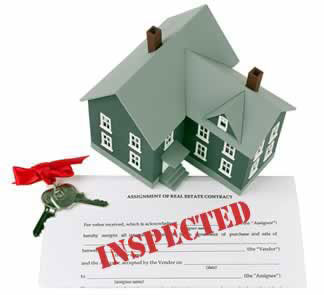|
I recommend getting a home inspection with your real estate purchase.A solid home inspection can save you from costly home repairs and unseen problems.You cannot get your home inspection payment back after ordering an inspection but, is it better to pay for an inspection or find out after you buy the property that you need a new $10,000 roof or septic system?It is helpful to know the structural integrity of the property your buying and little things you might need to repair that you never thought of.Hows the roof?What type of plumbing system do I have?Any signs of water intrusion?How much is it gonna cost me?The home inspector will go over everything he finds in person with you at the property if you like and also he will give you a detailed written report so you have it in writing.Its up to you as the home buyer ultimately.If you don't get one it can cost you in the long run
1 Comment
A kitchen refrigerator is an appliance that consists of a thermally insulated compartment and a heat pump, which transfers heat from the refrigerator's interior to its external environment. The refrigerator's interior is cooled to a temperature below the ambient air temperature. Refrigeration is essential for storing food, and the cool temperature of the refrigerator's interior helps slow the growth of micro-organisms to prevent spoilage.
Operation Cycle The slightly warm air inside the refrigerator comes in contact with the chilled coils and transfers its heat to the gas refrigerant flowing inside the cooling coils. This results in the cabinet interior and its contents to cool down. The warmed refrigerant flows to the compressor, which pressurizes and heats it up. The “squeezed” hot refrigerant leaves the compressor as a super-heated gas that flows to the condenser coils on the back-side of the refrigerator. As the gas flows through the condenser coils, the gas releases its heat to the surrounding air. That’s why it’s warm behind the refrigerator. The refrigerant then cools and condenses into a liquid. The liquid line terminates at the refrigerant control, the capillary tube, which controls the amount of refrigeration that goes to the cooling coils of the evaporator. When the liquid enters the capillary tube, the liquid pressure drops due to a very small diameter of the capillary. The refrigerant leaves the refrigerant control and enters a low pressure environment of the evaporator. Moving through the cooling coils, the refrigerant continues its job of absorbing heat from the food inside the refrigerator. Styles & Features Some common types of refrigerators include the following:
Some common features include:
Inspection According to the InterNACHI Standards of Practice (nachi.org/sop), the inspector is not required to inspect or move appliances. However, appliance inspection is required by some states' SOPs, and some inspectors offer appliance inspection as part of their standard home inspection. So, it's useful to understand how common household appliances function. The inspector may attempt to inspect the refrigerator using normal operating controls. A full and comprehensive inspection may need to be deferred to a qualified expert. However, the inspector may exert his/her best effort by referring to the owner's manual (if available) to determine the proper condition and operation of the appliance in order to report any apparent deficiencies, whose further evaluation and repair (if required) must be deferred to a qualified professional. The inspector may report as deficient:
Temperature The refrigerator should maintain an interior temperature of 40° F or less. The freezer should maintain an interior temperature below 32° F. Weight Most home refrigerators weigh between 200 and 450 pounds, and some models weight up to 875 pounds. Energy Efficiency Current U.S. refrigerator models that are ENERGY STAR-qualified use 50% less energy than the average models made in 1974. The most energy-efficient units made in the U.S. consume about one-half a kilowatt-hour per day. Large refrigerators, especially those with large freezers and ice makers, may use as much as 4 kWh per day. Damage Check the refrigerator inside and out, paying special attention to any areas corresponding to indications of damage. Look carefully for dents and scratches on both the interior and exterior of the refrigerator. Doors Open and close the refrigerator and freezer doors to check their operation. Check that the door lights come on and that the doors close evenly and tightly with the frame of the refrigerator. Inspect the gasket material of the door. The door should close and seal tightly, with no gaps that could allow cold air to escape. Door gaskets should not be torn, twisted, or otherwise out of shape to assure that they make a tight seal. Gaskets can be replaced and are not too expensive, but if they need to be replaced, this should lower the price of the used refrigerator. |
InsideOut Team
This blog is to help people better understand their home inspection. It is filled with great in depth advice. If you'd like a topic covered just send us an email on what you need more information on! Archives
August 2023
Categories
All
|
AboutThe best home & commercial building inspection company in Michigan. Serving Southeast Michigan, Northwest Ohio, Northern Michigan and surrounding areas.
|
Address8314 Whiteford Center Rd Ottawa Lake, MI
49267 1354 W Bear Lake Rd NE Kalkaska, MI 49646 |
ConnectSE Michigan: 734-224-0342
N Michigan : 231-714-6880 NW Ohio: 419-215-3856 [email protected] M-F: 7AM - 8:30 PM Saturday: 7AM - 8:30 PM Sunday: 7AM - 8:30 PM |
Social Media |
Resources |
© 2023 InsideoutInspections.net. All Rights Reserved.


 RSS Feed
RSS Feed